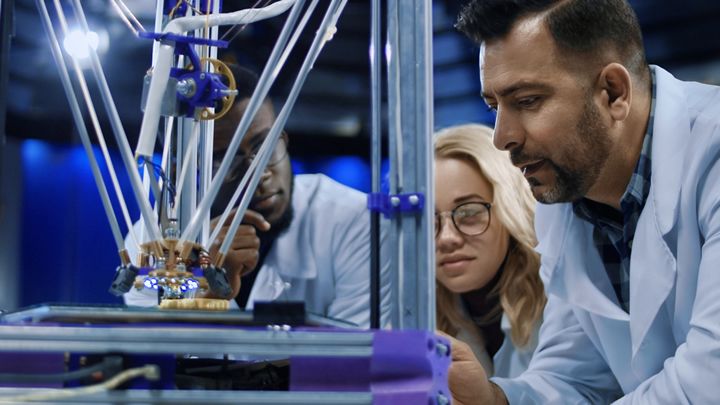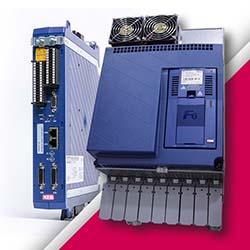If businesses approach the transition to an AI-enhanced workplace strategically, it can lead to a workforce that is invested, outcome-oriented, and well-positioned for a successful future.
 Sustaining a Positive Manufacturing Workplace in an Evolving AI World
Sustaining a Positive Manufacturing Workplace in an Evolving AI World

Julie Kniseley, President | James Moore HR Solutions
As manufacturers look to improve efficiency and productivity through automation and artificial intelligence, it’s essential that the existing workforce has the requisite skills to maintain performance and consistency in these new environments. The upskilling and reskilling of employees is a vital element when it comes to creating a balance between technology and human capital. Yet if businesses approach the transition to an AI-enhanced workplace strategically, it can lead to a workforce that is invested, outcome-oriented, and well-positioned for a successful future.
As AI finds its way into more processes, the industry is facing a catalytic moment. The drive for increased efficiency through predictive maintenance, machine learning, and smart operations is transforming manufacturing. Yet just as AI is shaping how things are built, it’s also transforming how people work. Manufacturers across the country are preparing for this change, but it is still a work in progress.
A 2025 McKinsey report claims that 92 percent of companies plan to increase their AI investments in the next three years. Still, only one percent of these respondents describe their AI deployments as being “at maturity.” This means a great majority of organizations are in flux, preparing for solutions that have yet to be defined and fully put into action. A similar McKinsey study from 2023 predicted that AI could add $3.8 trillion in value to the manufacturing sector by 2030 through the deployment of automation, predictive maintenance, and quality control solutions. These indicators show that the transformation is underway, and manufacturers need to arm their teams with the skills to leverage AI and the culture to support this revolution.
A positive, sustainable workplace with an ongoing culture of learning isn’t just a nicety in a nascent AI environment. It’s a tactical advantage. Companies that can balance technical innovation with human capital development will not only maintain performance, but will strengthen retention and engagement. This environment will enable companies to develop AI use cases that align with KPIs, and bring a company closer to who they want to be as an organization.
Below are some key strategies to help manufacturers and fabricators craft an AI strategy rooted in positive and productive company culture.
Start Small
Don’t launch an enterprise-wide AI overhaul. Manufacturers would be smart to implement a low-risk, high-impact AI pilot program that’s easily manageable and culturally visible to build trust and demonstrate its value to the workforce before scaling up. Remember that one size does not fit all when it comes to technology and your staff. Cross-functional AI systems should reflect the values and workstyles of multiple teams, instead of being limited to a single department’s vision. And don’t forget to solicit honest feedback from the team as the program is adopted.
Focus on Skills Assessment
Don’t assume—assess. Before any AI pilot program is put into action, manufacturers need to evaluate the skillsets of their current workforce. A thorough assessment provides a baseline for targeted training and helps prevent critical talent gaps. A clear picture of the staff’s AI-readiness helps leadership focus training efforts where they will have the greatest impact.
Assess the current workforce using criteria such as:
- Technical readiness. Evaluate how comfortable the team is with AI tools and digital basics. This could include familiarity with AI platforms like ChatGPT or Copilot.
- Soft skills. This covers characteristics like adaptability, collaboration, and critical thinking. Strength in these areas can help employees navigate change and make more shrewd decisions in an AI-supported workplace.
- Measurement tools. What does your organization use to evaluate the staff environment? Companies could use readiness surveys, light evaluations, or job shadowing programs to better define members’ duties and identify the support that staff members require.
Mapping Talent vs. Needs
Once skills are assessed, leaders must visualize how their current workforce aligns with future roles. Mapping a company’s existing talent pool against its needs creates a strategic blueprint for upskilling and reskilling. The goal is to identify transition pathways for team members and show them how they can grow, not just what’s going away. Overcommunicating the company’s goals and progress will keep employees informed and engaged rather than anxious.
A role-transition matrix can clarify potential pathways for employees whose tasks may be automated. For example, a machine operator might transition to a predictive maintenance technician, or a quality-control specialist might shift to an AI data analyst. Visual mapping helps management identify design training plans that match emerging job categories.
Measuring the Results
Metrics matter: Cultural health can be demonstrated by increased retention rates, high trust scores from employee surveys, increased business outcomes, and high training participation rates. When people feel overwhelmed by change or left out of digital transformation, they leave. Above-average retention scores suggest that a manufacturer’s workforce feels engaged, valued, and secure—even amid the deployment of automation. For example:
- In one successful AI deployment, an automotive parts plant faced a 30 percent skill gap when rolling out new, AI-enabled production lines, resulting in low morale. After the company retrained 60 workers and established clear transition pathways for a variety of roles in the company, turnover dropped by 27 percent and output jumped by 15 percent.
- In another case, a food processing company was met with resistance to its AI deployment plans. Then they introduced an AI Champions program, including 15-minute training sessions that catered to the team’s needs and work styles. This strategy yielded 85 percent staff engagement, while processing defects decreased by 10 percent.
Building an AI-Ready Future
The manufacturing sector is entering an AI-powered era where efficiency gains and human potential can reinforce each other, when effectively managed. Assess skills to understand the workforce baseline, and then nurture a culture of continuous learning, transparency, and empathy.
Technology is ever changing. Yet it is culture, even more than software solutions, that will determine whether the AI evolution will drive fear or opportunity. By balancing innovation with an investment in people, manufacturers can bridge the gap between automation and humans, and get the most successful outcomes from their AI investments.
Julie Kniselely, President, James Moore HR Solutions
 With more than 30 years of strategic human resources leadership, Julie brings a wealth of experience in driving organizational success through innovative HR strategies. Throughout her career, she has worked extensively across all facets of human resources, including workforce planning, organizational design, talent management, mergers and acquisitions, employee relations and compliance. Her deep expertise in aligning HR initiatives with business goals has helped organizations optimize workforce structures, enhance employee engagement, and achieve sustainable growth.
With more than 30 years of strategic human resources leadership, Julie brings a wealth of experience in driving organizational success through innovative HR strategies. Throughout her career, she has worked extensively across all facets of human resources, including workforce planning, organizational design, talent management, mergers and acquisitions, employee relations and compliance. Her deep expertise in aligning HR initiatives with business goals has helped organizations optimize workforce structures, enhance employee engagement, and achieve sustainable growth.
As leader of the JMA HR Solutions team, Julie has partnered with businesses across industries to tackle critical workforce challenges, leveraging data-driven insights and best practices to deliver measurable results. A trusted advisor and frequent speaker, Julie is passionate about fostering effective communication and empowering organizations to unlock the full potential of their human capital. Julie is a member of the Society for Human Resources Management (SHRM) and is a certified SHRM Senior Certified Professional.
The content & opinions in this article are the author’s and do not necessarily represent the views of ManufacturingTomorrow
Comments (0)
This post does not have any comments. Be the first to leave a comment below.
Featured Product

